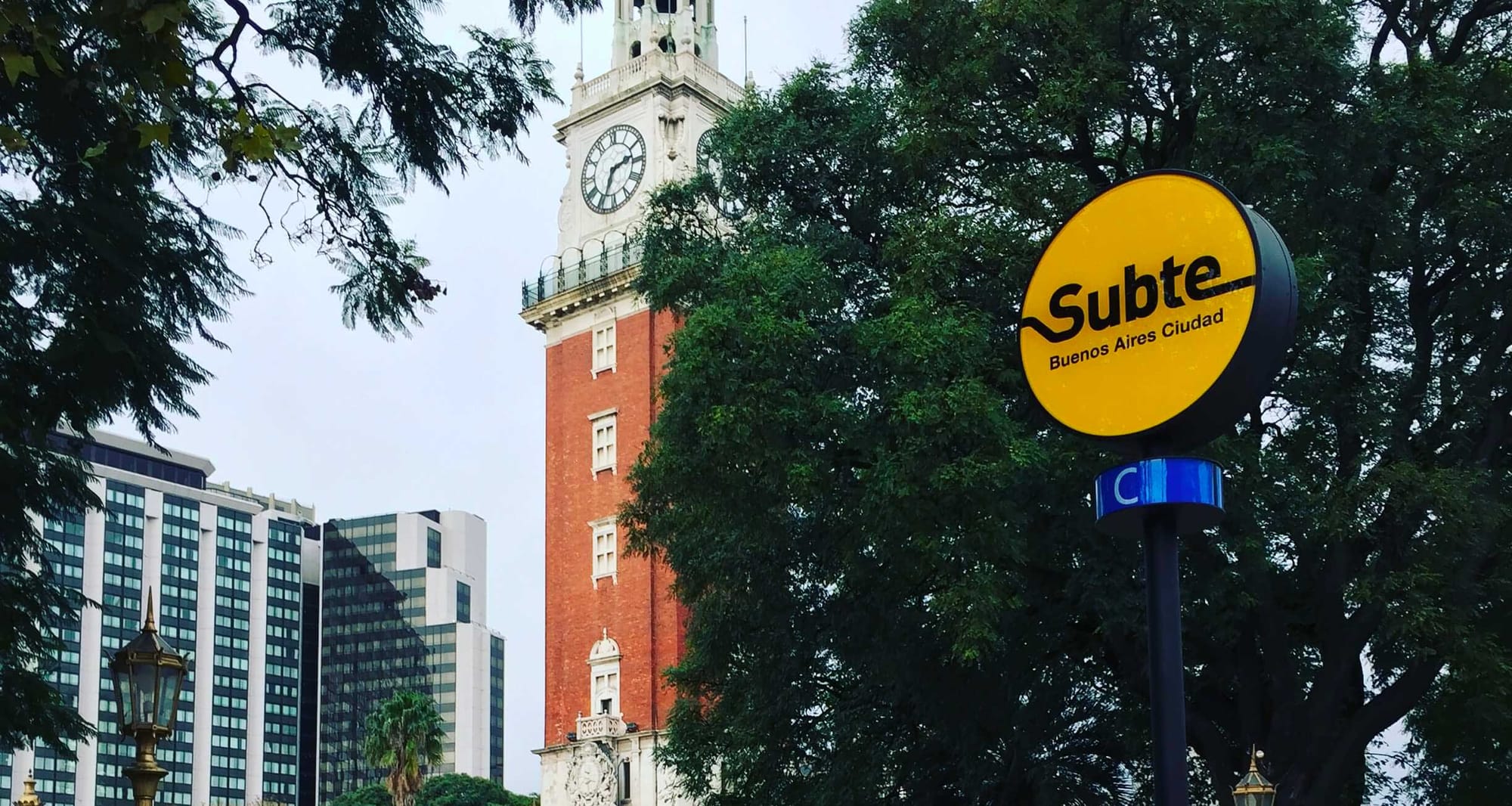
The public transportation system in Buenos Aires consists of buses, an underground subway and regional/commuter trains. Taken as a whole, the wheelchair accessibility of the Buenos Aires public transport system is poor, but that does not mean that it lacks utility. Because of the significant cost savings of public transit over wheelchair taxis in Buenos Aires, you should ride public transit whenever feasible. Use this guide as a resource to planning your accessible journeys on public transport in Buenos Aires.
Buenos Aires City Bus
Nearly all city buses in Buenos Aires are wheelchair accessible with a manual ramp at the rear door, but not all stop locations are equally wheelchair accessible.
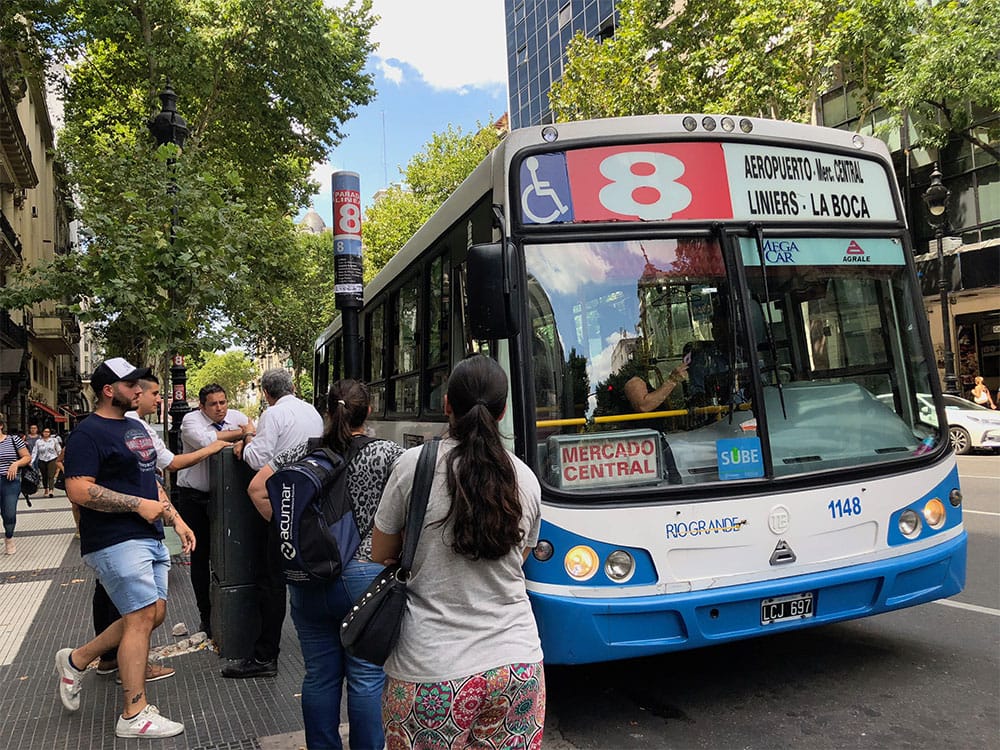
The bus pictured above, #8, runs on a number of routes, one of which is the airport. This particular bus was bound for Mercardo Central, not the airport, so always check the destination posted in the window before boarding. Most drivers are unable to speak or understand English.
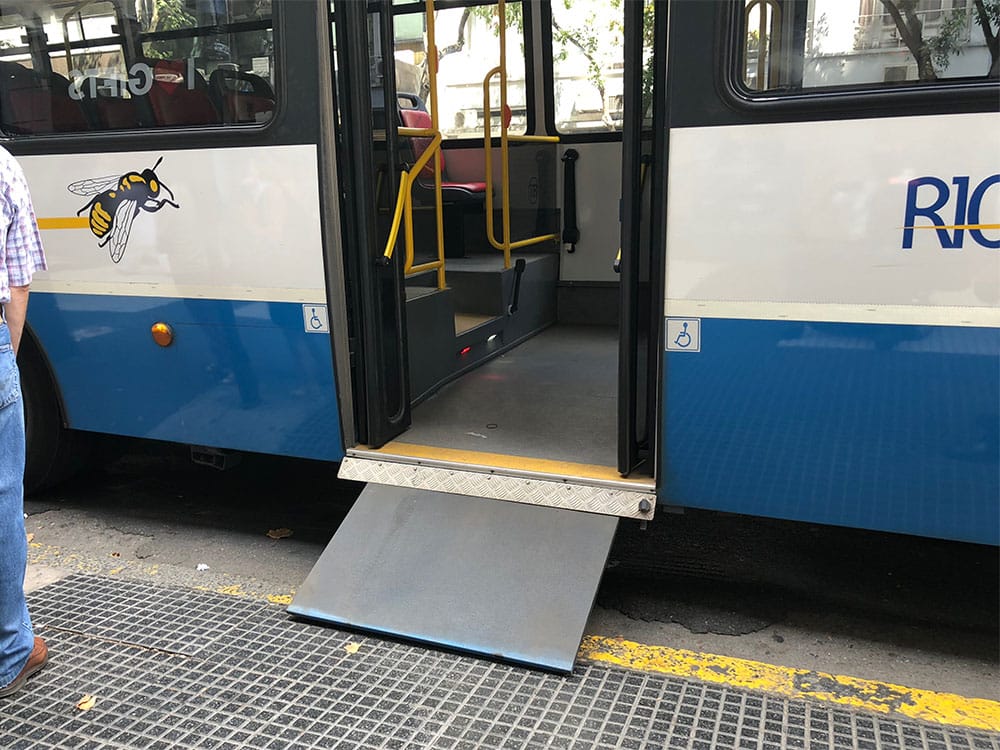
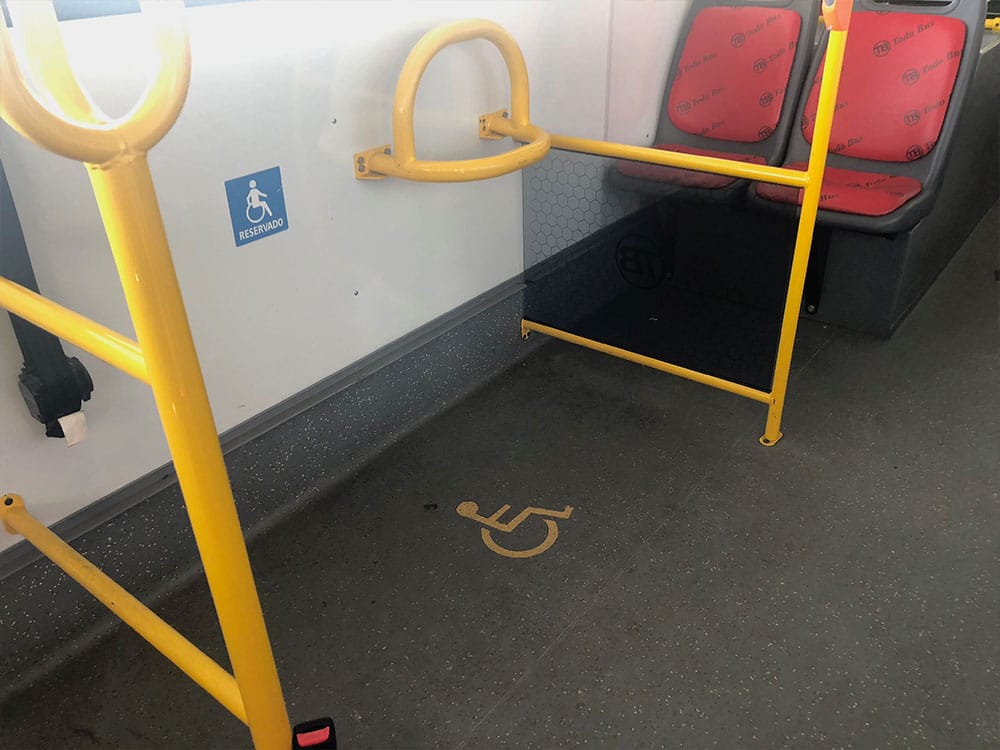
The manual in-floor ramp is pulled out and laid on the curb, and some buses can be slightly lowered using hydraulics. When boarding a bus along the street at a standard-height curb, the ramp will be VERY steep. I was able to board the bus even with the steep ramp pictured above using my power wheelchair, but I required help and a push from behind.
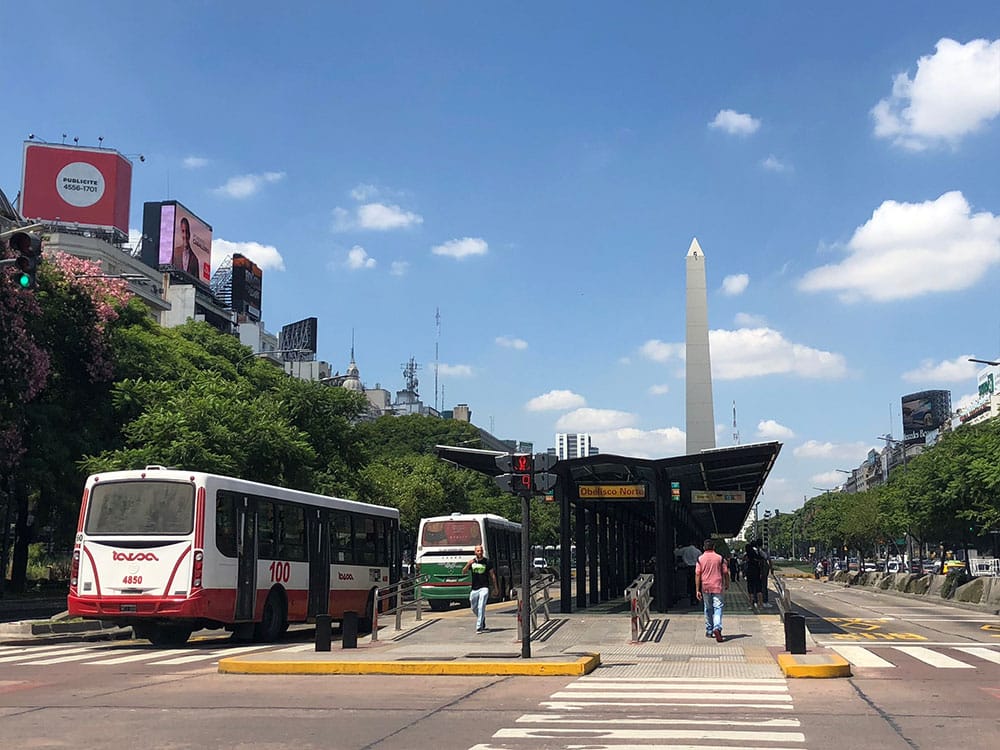
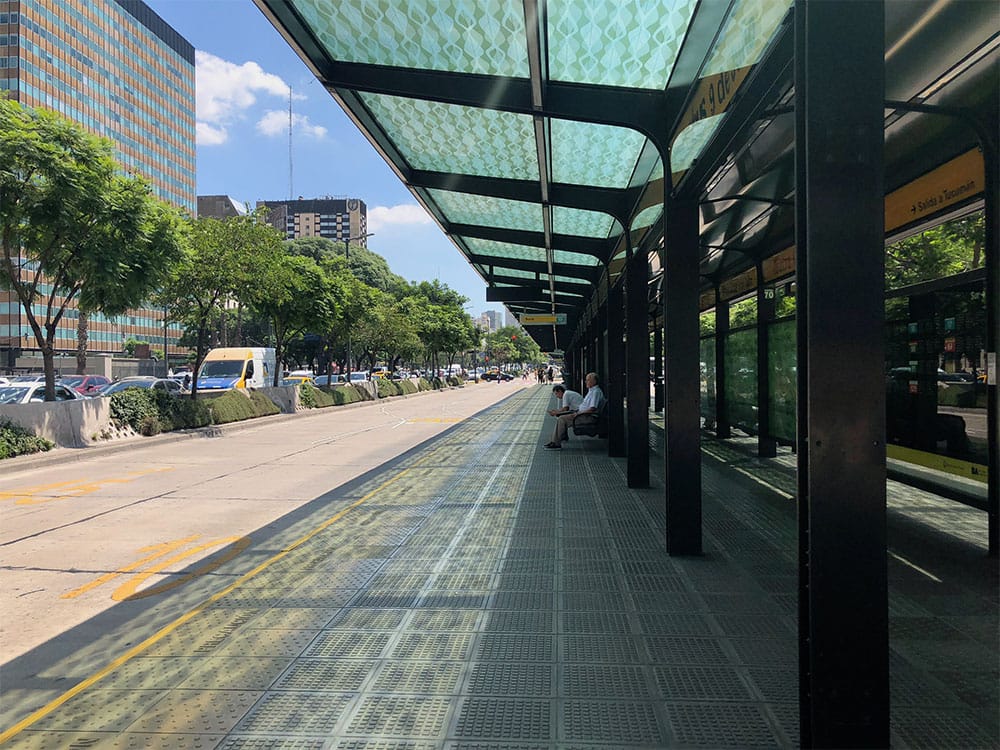
At bus stations, like the one pictured above, elevated boarding platforms are accessible, and the manual ramp is nearly level when deployed. This is the most accessible way to utilize the city bus system, at station stops with a raised platform. I recommend using Google Maps and the satellite/street view to verify the locations of raised platform stops. It will take a bit of work on your part, but the savings on transport is worth the effort.
Note, for those taking the buses from Ezeiza Airport – there is a curbed boarding platform at the airport’s bus stop, located between terminals A and C. Wheelchair users will need help from the driver to board the bus due to the steep ramp.
Buenos Aires Subte / Underground
The Buenos Aires Subte dates to 1913 and was the first subway system in Latin America. It consists of six underground lines, lettered A, B, C, D, E and H.
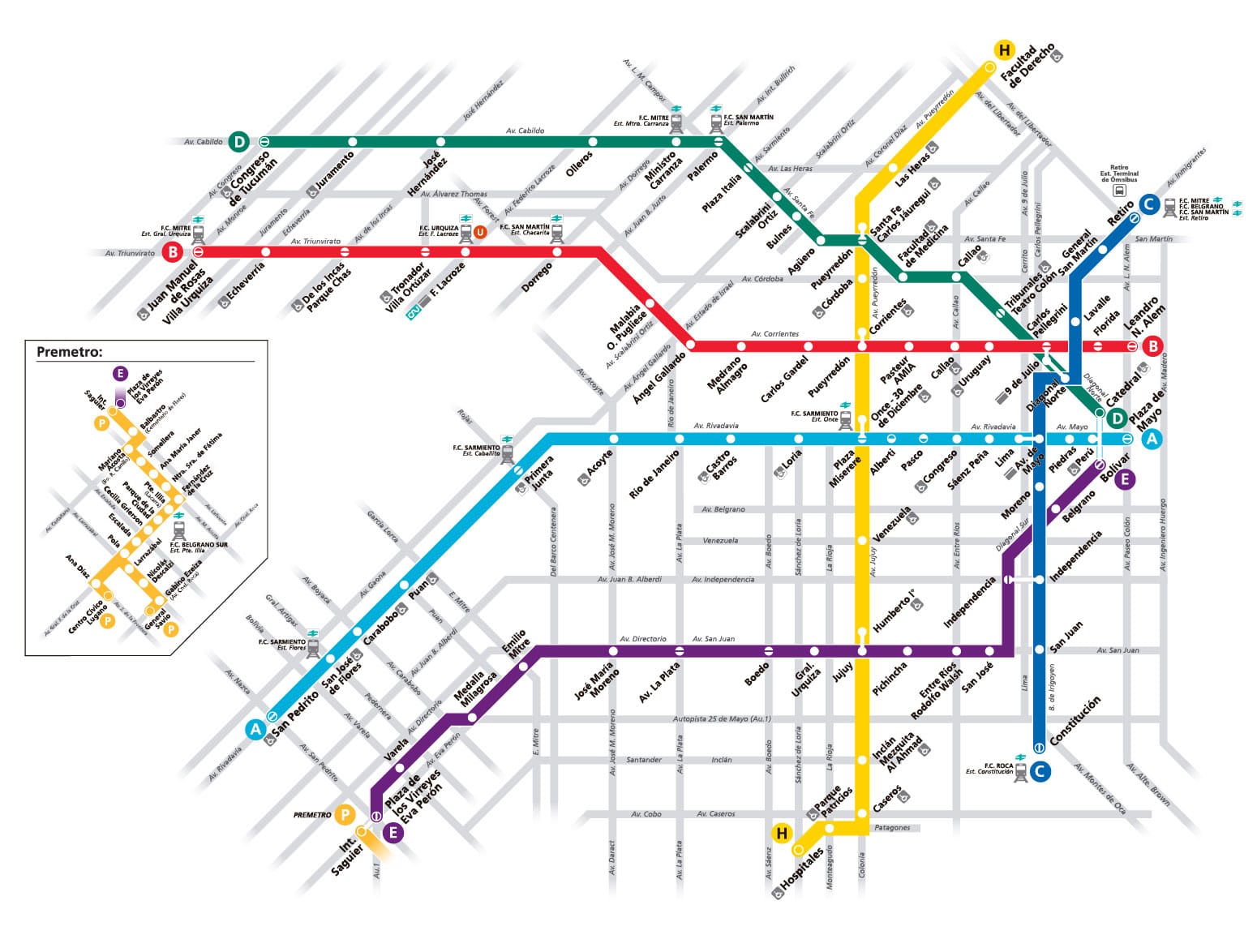
Wheelchair accessibility on the Subte is a mixed bag, with some lines being more accessible than others. Lines A, B and D are partially accessible, while Lines C and E are not wheelchair accessible at any station. The newest Line H, opened in 2007, is accessible at every station. The above-ground Premetro is not wheelchair accessible.
The following Buenos Aires Subte stations are wheelchair accessible:
- Line A — Acoyte, Carabobo, Congreso, Perú, Puan, San José de Flores, San Pedrito
- Line B — Callao (B), De los Incas – Parque Chas, Echeverría, Juan Manuel de Rosas – Villa Urquiza, Tronador – Villa Ortúzar, Uruguay
- Line D — Congreso de Tucumán, Juramento, Facultad de Medicina, Tribunales – Teatro Colon
- Line H — Caseros, Córdoba, Corrientes, Facultad de Derecho, Hospitales, Humberto I, Inclán Mezquita Al Ahmad, Las Heras, Once – 30 de Deciembre, Parque Patricios, Santa Fe – Carlos Jáuregui, Venezuela
The following stations are wheelchair accessible in only one direction of transit:
- Line A — Castro Barros, Loria, Primera Junta
- Line D — Callao (D), Catedral
Street-level Elevators
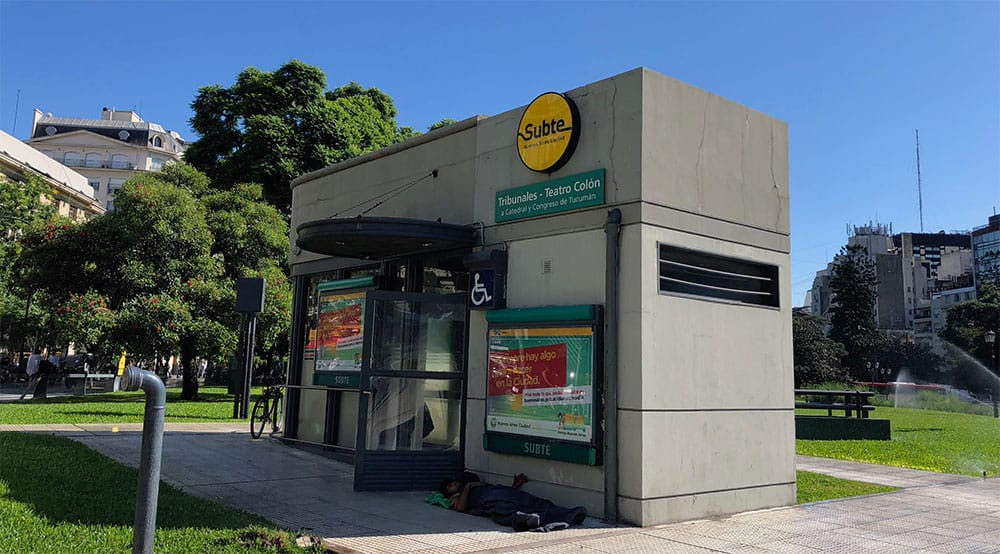
Elevators down to the subway stations in Buenos Aires are generally well-marked and nearby one of the entrances with stairs. Because stations have multiple entrances, you may have to search for the elevator. At some stations, the elevators go directly to the train platform, with separate street elevators for each direction of travel.
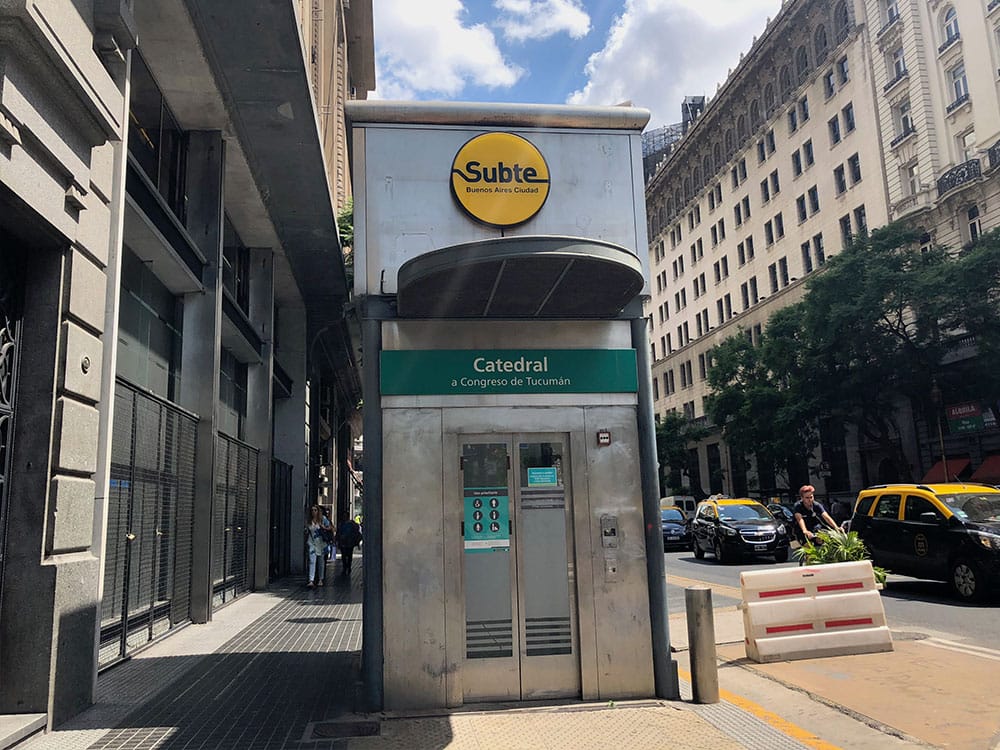
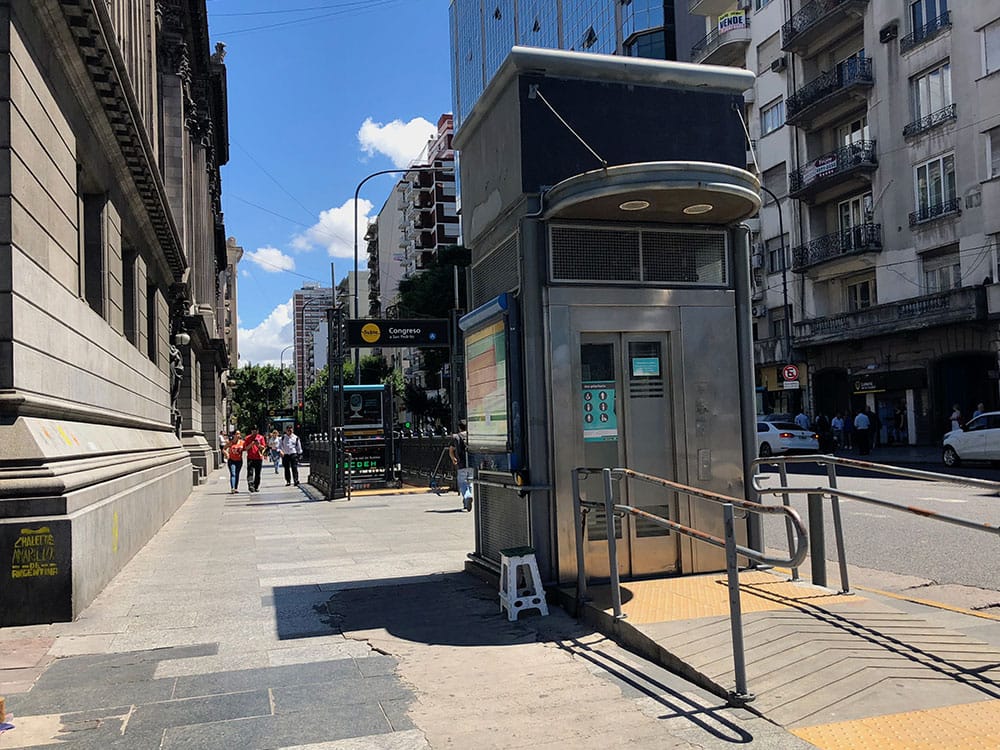
The elevators are small in size, but capable of accommodating a power wheelchair, plus 1 or 2 other people. At many stations, the elevators do not lead to the station mezzanine, but instead go directly to the boarding platform. In this case, there will be two street elevators — one for each direction of travel.
Subte Train Cars – Boarding & Accessibility
The gap between trains and station platforms is minimal, but the step up often ranges from 1 to 3 inches, depending on the station.
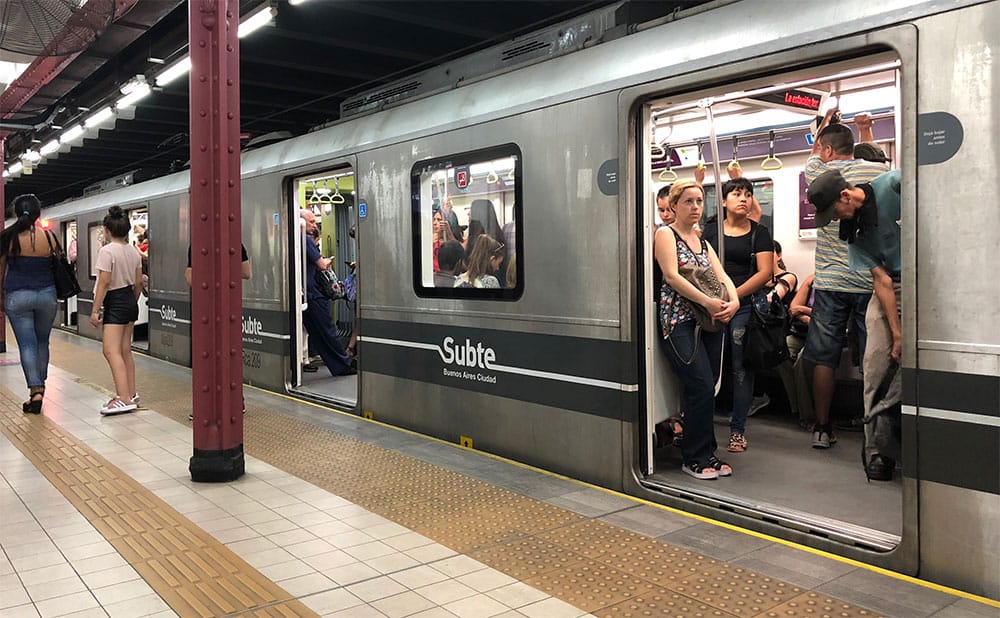
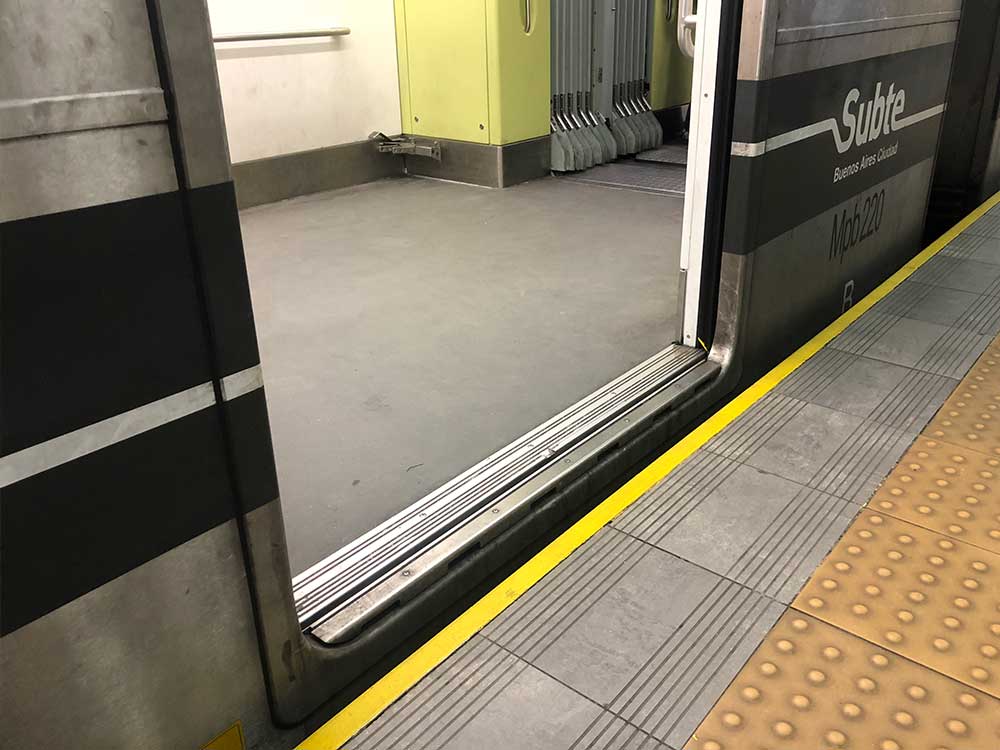
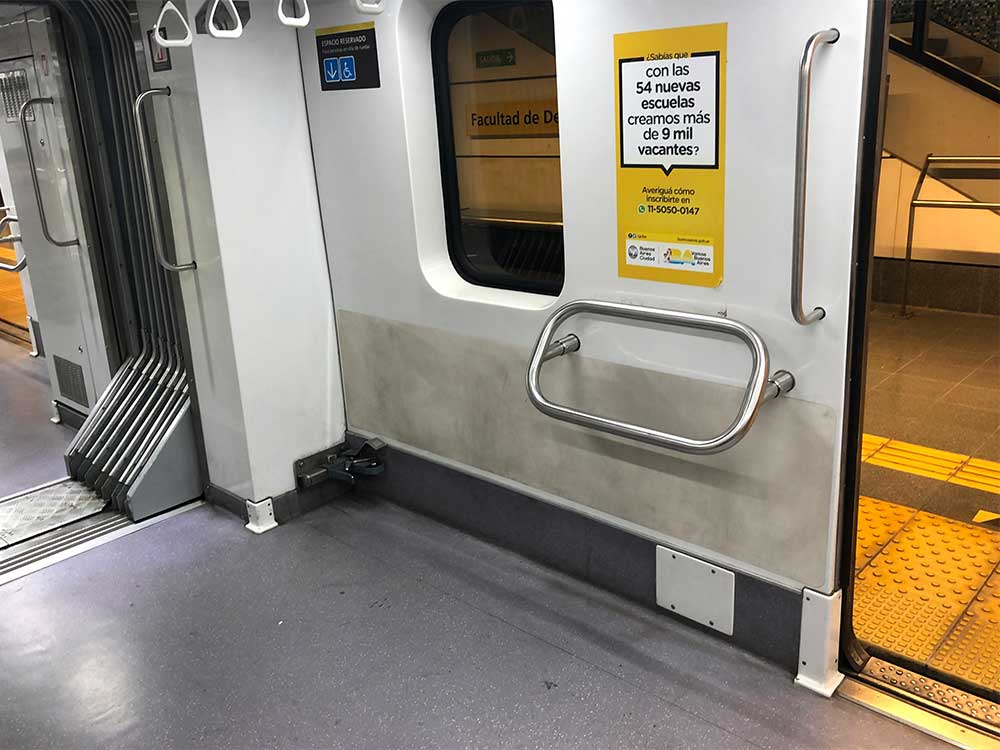
My power wheelchair had no issues overcoming this barrier, but small scooters may not be able to without assistance. Cars with a wheelchair space are marked with the wheelchair symbol outside of the door. Trains are often crowded and may be difficult to utilize during peak (rush hour) periods.
Fares & Payment
Wheelchair users do not have to pay to ride the subway. You can enter through one of the doors marked “emergency exit” next to the fare collection gates. Don’t worry, there is no alarm. At emergency gates locked from the inside, a station staff member will provide access.
For your travel companions, the cost of a subway or bus ride is 16.50 Argentine Pesos, or about $0.40 USD. Public transit is very inexpensive in Buenos Aires. Payment of fares is done with the tap of a reloadable SUBE card.
Reloadable SUBE Card
The SUBE card is free for new users, and tourists can pick one up from a tourist information office. Loading the card with monetary value must be done at a ticket kiosk in a Subte station (generally not accessible) or at a retailer/convenience store with a SUBE card emblem. I had no trouble finding a convenience store on Florida Street and presented my card – asking that it be loaded with 200 pesos of value (~$4.50 USD). This took about a minute and I was good to go.



